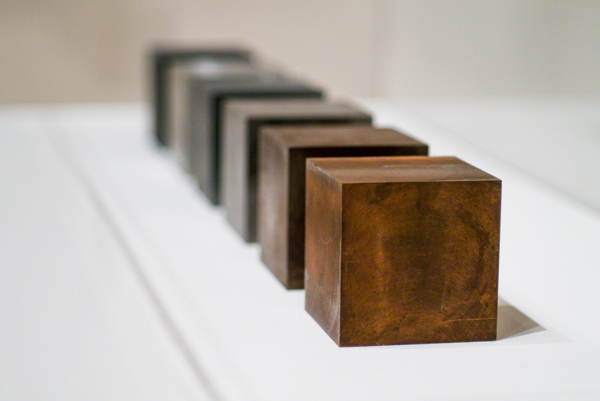
As the Dorsky Museum’s flagship exhibit “Dick Polich: Transforming Metal into Art” comes to a close in just one week, the museum wants to make sure that visitors get the best experience possible.
Guest Educator Kevin Cook gave an hour long tour of the exhibit on Sunday, Dec. 7, which included anecdotes about Dick Polich that could not be heard anywhere else.
Cook is a landscape painter from the Hudson Valley. He graduated from SUNY New Paltz with a B.S. in art education, and conducts tours at the Dorsky whenever he can. He is also a talented artist, having had his paintings shown off at galleries in New Paltz and around the world. His style is inspired by that of the 19th century Hudson River School artists and the natural beauty found in the mountains of New Paltz.
“Dick Polich: Transforming Metal Into Art” is meant to honor Polich, owner and founder of Polich Tallix Art Foundry, a man who has been manufacturing artists works for over 40 years.Polich’s foundry has created works for renowned artists such as Nancy Graves, Roy Lichtenstein, Tom Otterness and Jeff Koons, and at least one of example of each of these artists’ works are present at the exhibit.
Janine Antoni’s Umbilical (2000) stood out as one of the most impressive works. Crafted from sterling silver, it portrays the negative image of the artists mouth and mother’s hand on a baby spoon. One of the smallest works on exhibit, Umbilical shows that the foundry doesn’t limit itself to creating large sculptures. Untitled (Bunny) (1969) was another piece that stood out, as it credits Polich and his foundry colleague Sandy Saunders as the artists. The piece is a small bronze bunny that includes the sculpture’s rubber mold and plaster shell on display. The piece is symbolic of Polich’s beginnings in the art world, as Polich and Saunders created it as a test to make sure their materials and equipment worked properly.
Roy Lichtenstein’s Lamp on Table (1977) is a prominent sculpture, as it sits right in the middle of the exhibit. Although it is a 3D sculpture crafted from bronze, it looks like a two-dimensional object when viewed head-on. The work portrays a lamp extending rays of light that vary in color onto a gray desk, and the way in which the sculpture deceives the human eye into thinking it is a drawing is exceptional.
All of the works shown came in different shapes and sizes, demonstrating the foundry’s immense skill and diversity.
Cook said that Polich felt he had a role to play to help the artist and that Polich would not have any work to do without the imagination of artists.
“Polich sees himself as a conductor and artists as musicians in a symphony,” Cook said.
Polich is also a skilled businessman. According to Cook, Polich lost his love for his company after it merged with a British company, as he did not have as much control as he wanted. He proceeded to sell his stock in Tallix in 1995. However, he didn’t give up there. He built a new foundry one year later, naming it Polich Art Works.
In 2006, Tallix and Polich Art Works merged, creating what we know now as Polich Tallix Art Foundry. Polich was therefore able to keep control of his company and expand it.
Cook spoke highly of Polich and said that he has an “intense, driving mentality” that ultimately made his company a success.
At 82 years old, Polich continues to run the foundry with the same efficacious mentality.
